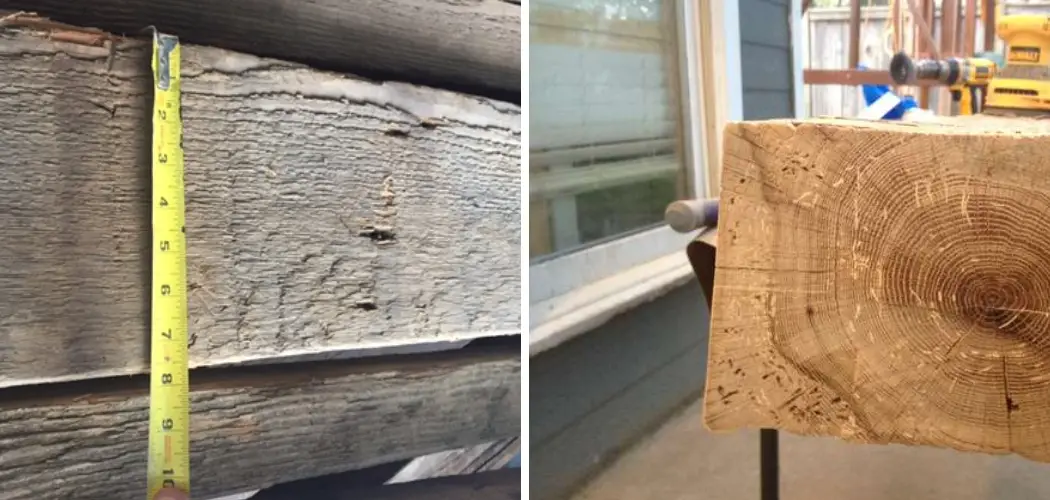If you’re looking for a rustic and unique addition to your home, barn wood may be the perfect material for you. Barn wood can create all sorts of interesting features, from furniture to walls. But before you start picking out your favorite pieces, it’s important to learn how to identify barn wood.
There are a few things to look for, including age and type of wood. By understanding these factors, you’ll be able to select the best materials for your project. So if you’re ready to add some rustic charm to your home, keep reading for the details on how to identify barn wood.
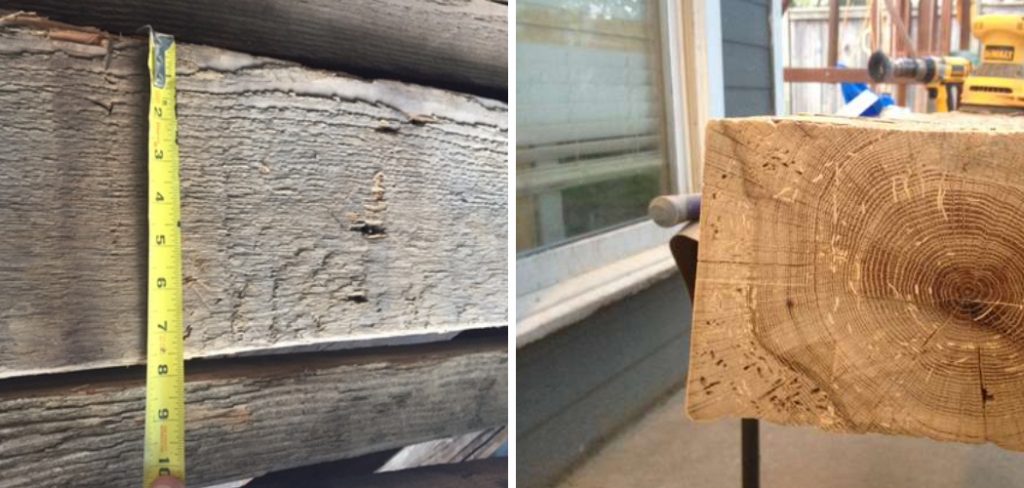
Barn wood is simply wood that has come from an old barn. It can be used for a variety of purposes, including furniture, flooring, walls, and more. Barn wood is often times cheaper and more readily available than other types of wood, making it a popular choice for those looking to save money on their projects. Barn wood can also add a unique and rustic look to any space, making it a popular choice for home décor.
When shopping for barn wood, it is important to keep in mind that it is not always of the highest quality. Oftentimes, barn wood can be full of knots and other imperfections. However, these imperfections can actually add to the charm of the wood, making it a popular choice for those looking for a unique and rustic look.
Summary: Identifying barn wood can be a tricky task, but with a little bit of effort, you can easily identify the different types of barn wood. First, look for the grain pattern. Barn wood usually has a curly or wavy grain, which makes it easy to identify. Next, look for the color. Barn wood is usually a dark color, like black or brown. Finally, check the texture. Barn wood is usually smooth, but it can have a slight grain.
Types of Barn Wood:
There are a few different types of barn wood, each with its unique look and feel.
Pine:
Pine is a softwood that is light in color with a straight grain. It is easy to work with but not as durable as some other options. Nevertheless, pine is a popular choice for furniture and cabinets.
Oak:
The wood of an oak tree is usually characterized by its strong grain patterns. Oak is a very hard and heavy wood, making it ideal for construction purposes. If you come across a piece of barn wood that is very dark in color, it is likely oak.
Cedar:
Cedar is a softwood that is red or brown in color with a straight grain. It is light in weight and has a strong scent. Cedar is often used for its natural insect-repelling properties. It is also rot-resistant.
Poplar:
Poplar is a softwood that is light in color with a straight grain. It is easy to work with but not as durable as some of the other woods on this list. It is often used for construction and furniture.
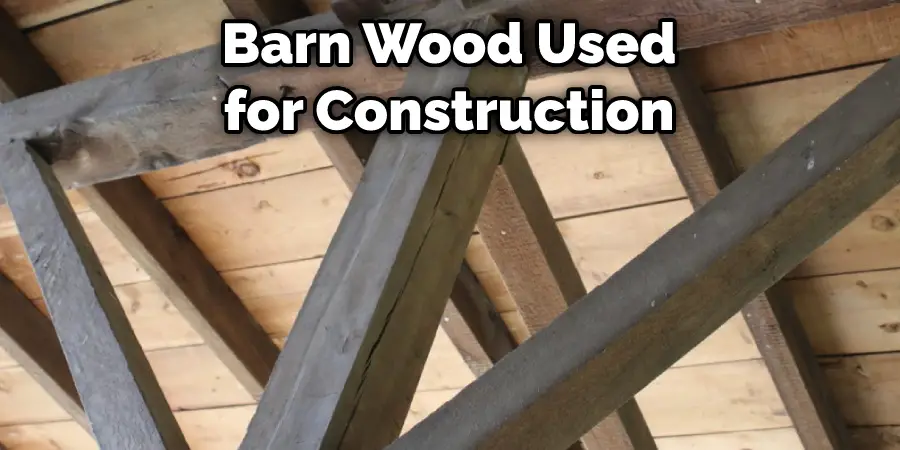
Walnut:
Walnut is a hardwood that is dark in color with a straight grain. It is heavy and strong, making it one of the most popular woods for furniture and floors. You can identify walnut by its smooth, dark brown color and straight grain.
Hickory:
Hickory is a type of hardwood that is known for its strength and durability. It is often used in the construction of barns and other structures. When looking for barn wood, hickory is a good option to consider. This type of wood is typically light brown in color with a straight grain pattern.
Step by Step Process to Identify Barn Wood:
1. Look for Signs of Age.
One of the most important things to look for when identifying barn wood is signs of age. Barn wood is typically much older than other types of wood, so it’s important to look for cracks, knots, and other imperfections that can help determine its age.
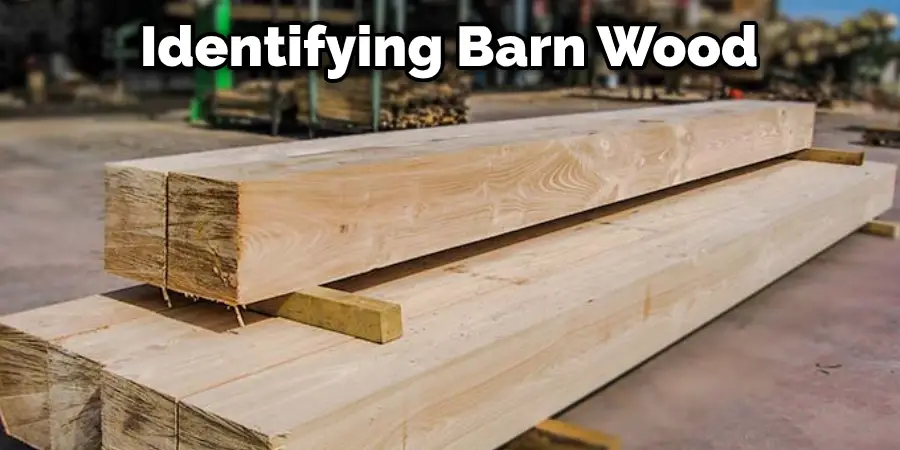
2. Consider the Color of the Wood.
Another way to identify barn wood is by its color. Barn wood is typically much darker than other types of wood, such as pine. The color of the wood can also vary depending on the age of the barn. Older barns tend to have darker wood, while newer barns may have lighter wood.
3. Inspect the Texture of the Wood.
When you find a piece of wood that you think might be barn wood, take a close look at the texture of the wood. Barn wood is typically weathered and worn, with a rough surface. The wood grain may also be more visible due to the weathering.
4. Look for Signs of Nails or Other Metal Hardware.
Another way to tell if a piece of wood is barn wood is by looking for nails or other metal hardware signs. If you see any protruding nails, screws, or brackets, the chances are good that the wood came from a barn. The metal hardware can also help you date the wood, as certain styles of nails and screws were used during different eras.
5. Check for a Weathered or Aged Appearance.
Another clue that you may be looking at barn wood is the overall appearance of the wood. If the wood looks weathered or aged, it likely came from a barn. Of course, this isn’t always the case, but it’s worth considering. Check for signs of wear and tear, such as chipped paint or cracked wood. If the wood looks like it’s seen better days, there’s a good chance it came from a barn.
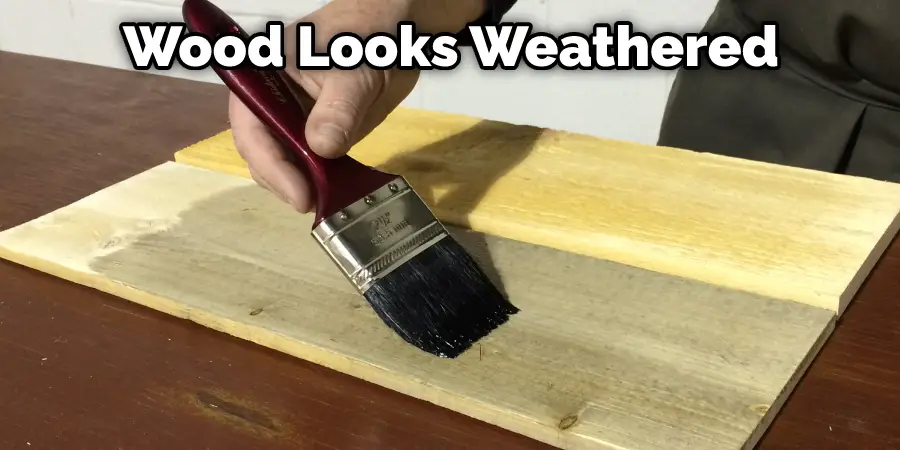
6. Look for Signs of Insect Damage.
One final way to tell if you’re looking at barn wood is to look for signs of insect damage. Woodboring insects like carpenter bees, powderpost beetles, and termites can damage wood, leaving telltale holes and tunnels. Checking for this type of damage is especially important if you’re planning on using the barn wood for construction purposes. If you see any signs of insect damage, it’s best to avoid using the wood, as it may not be structurally sound.
7. Inspect the Wood for Rot.
Another thing to look for when trying to identify barn wood is rot. Rot can occur in any type of wood, but it is more common in barn wood because it is often left exposed to the elements. If the wood is discolored or smells bad, it is probably Rot. If the wood is structurally sound, you can still use it, but you will need to be careful when working with it.
8. Ask the Seller.
If you’re still not sure whether or not the wood you’re looking at is barn wood, your best bet is to ask the seller. Many times, the person who is selling the wood will be able to tell you for sure whether or not it came from a barn. They may even be able to tell you the story of the barn, which can add to the charm and character of the wood.
9. Do Your Research.
If you’re still not sure how to identify barn wood, do some research online. There are many resources available that can help you determine what type of wood you have. You can also contact a local sawmill and ask for their help. They should be able to tell you whether or not the wood is barn wood and how to use it best.
10. Get an Expert Opinion.
If you’re still unsure about how to identify barn wood, you can always consult with an expert. Look for someone who has experience with woodworking or carpentry, as they will likely be familiar with the different types of wood and how to identify them. You can also ask a local lumberyard for help, as they should be able to point you in the right direction.
Finally, if all else fails, you can always take a wood sample to a professional laboratory for testing. This option is usually more expensive, but it will give you a definitive answer about what type of wood you’re dealing with.

Is Barn Wood Heavy or Light?
One of the key ways to identify barn wood is by its weight. Barn wood is typically much heavier than other types of wood, such as pine. This is because barn wood is denser, making it more durable and less likely to warp or crack over time. Additionally, barn wood typically has a rougher texture than other types of wood due to the fact that it is unfinished. This can make it more difficult to work with and give it a unique look and feel.
You Can Check It Out to How to Make Cedar Chest
Conclusion
This article has provided a brief overview of how to identify barn wood. Barn wood is a unique and popular type of wood that can be used for various purposes. However, it is typically much heavier and denser than other types of wood, and it has a rougher texture. If you’re still unsure how to identify barn wood, there are a few key things to look for, including the type of tree it came from, the age of the wood, and the color, with a little bit of research.
First, check the weight and density of the wood. Then, feel the texture of the wood to see if it’s rough or smooth. Finally, look at the color of the wood. Barn wood is typically a deep, rich brown color. If you keep these things in mind, you should be able to identify barn wood easily. If you have any questions about How to Identify Barn Wood, please leave a comment below. Thanks for reading.

